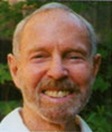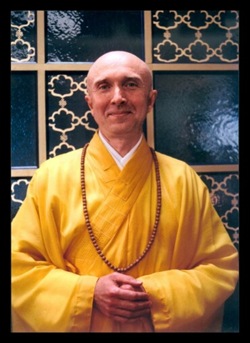At a recent gathering of the Mindful Artists Collective, one member read aloud “The Sutra on Knowing the Better Way to Live Alone,” as it is recorded in the Plum Village Chanting and Recitation Book.
The Sutra on Knowing the Better Way to Live Alone
Bhaddekaratta Sutta : Translated from the Pali
I heard these words of the Buddha one time when the Lord was staying at the monastery in the Jeta Grove, in the town of Shravasti. He called all the monks to him and instructed them, “Bhikkhus!” And the bhikkhus replied, “We are here.” The Blessed One taught, “I will teach you what is meant by ‘knowing the better way to live alone.’ I will begin with an outline of the teaching, and then I will give a detailed explanation. Bhikkhus, please listen carefully.”
“Blessed One, we are listening.”
The Buddha taught:
Do not pursue the past.
Do not lose yourself in the future.
The past no longer is.
The future has not yet come.
Looking deeply at life as it is
In the very here and now,
The practitioner dwells in stability and freedom.
We must be diligent today.
To wait until tomorrow is too late.
Death comes unexpectedly.
How can we bargain with it?
The sage calls a person who knows how
to dwell in mindfulness night and day
“one who knows the better way to live alone.”
“Do not pursue the past. / Do not lose yourself in the future.” These lines have always puzzled me. I am more prone to losing myself in the past, and pursuing the future, than the other way around. I constantly catch myself reliving an event or conversation from the past, rather than living in the present moment. And the future is pursued in the form of plans, hopes, and worries. As if to pre-live the future would be to avoid the pain of surprises. Still, I have no argument with the view that re-living and pre-living are not the way to stability and freedom.
“Bhikkhus, what do we mean by ‘pursuing the past’? When someone thinks about the way his body was in the past, the way his feelings were in the past, the way his perceptions were in the past, the way his mental factors were in the past, the way his consciousness was in the past; when he thinks about these things and his mind is burdened by and attached to these things which belong to the past, then that person is pursuing the past.
It happens that lately I have been thinking a lot about the way my body was in the past, as signs and symptoms of middle age make themselves known with increasing frequency. The Buddha was speaking of the body as one of the five skandas, or aspects of our experience of being, and not of “the body of my youth” necessarily. But this is the association that arose for me. When I think about the way my body was in the past, is my mind “burdened by and attached to these things which belong to past”? Oh, yes.
There must be a better way.
“Bhikkhus, what is meant by ‘not pursuing the past’? When someone thinks about the way his body was in the past, the way his feelings were in the past, the way his perceptions were in the past, the way his mental factors were in the past, the way his consciousness was in the past; when he thinks about these things but his mind is neither enslaved by nor attached to these things which belong to the past, then that person is not pursuing the past.
To think about these things and be “neither enslaved by nor attached to” them, neither approving nor condemning those past conditions, nor present conditions – that sounds exactly like freedom.
“Bhikkhus, what is meant by ‘losing yourself in the future’? When someone thinks about the way his body will be in the future, the way his feelings will be in the future, the way his perceptions will be in the future, the way his mental factors will be in the future, the way his consciousness will be in the future; when he thinks about these things and his mind is burdened by and daydreaming about these things which belong to the future, then that person is losing himself in the future.
Mostly, these days, I feel burdened by my imaginings of the future. My body will be even less capable and even less responsive to my wishes. Farther out in time, my body, as well as my feelings, perceptions, mental factors, and consciousness will not “be” at all, in the way that they “be” right now. I used to feel much more neutral about these facts, but increasingly I am disturbed by them. I have miles to go before even coming near acceptance.
I notice that the teaching is clear that it is expected, and acceptable, that we would think about these things, both the past, which is gone, and the future, which is still to come. We’re not meant to stop thinking about these things, only to think about them without attachment.
“Bhikkhus, what is meant by ‘not losing yourself in the future’? When someone thinks about the way his body will be in the future, the way his feelings will be in the future, the way his perceptions will be in the future, the way his mental factors will be in the future, the way his consciousness will be in the future; when he thinks about these things but his mind is not burdened by or daydreaming about these things which belong to the future, then he is not losing himself in the future.
In the next two passages, I find myself doing some mental editing, as you’ll see:
“Bhikkhus, what is meant by ‘being swept away by the present’? When someone does not study or learn anything about the Awakened One [within oneself], or the teachings of love and understanding, or the community that lives in harmony and awareness; when that person knows nothing about the noble teachers and their teachings, and does not practice these teachings, and thinks, ‘This body is myself; I am this body. These feelings are myself; I am these feelings. This perception is myself; I am this perception. This mental factor is myself; I am this mental factor. This consciousness is myself; I am this consciousness,’ then that person is being swept away by the present.
“Bhikkhus, what is meant by ‘not being swept away by the present’? When someone studies and learns about the Awakened One [within oneself], the teachings of love and understanding, and the community that lives in harmony and awareness; when that person knows about noble teachers and their teachings, practices these teachings, and does not think, ‘This body is myself; I am this body. These feelings are myself; I am these feelings. This perception is myself; I am this perception. This mental factor is myself; I am this mental factor. This consciousness is myself; I am this consciousness’, then that person is not being swept away by the present.
What is striking about “not being swept away by the present” is what is not said about the better way to think. The teaching is that the person does not think, “This body is myself; I am this body.” The teaching is not that the person thinks, “This body is not myself; I am not this body.” We’re not told what the person thinks about themselves in relation to their body, just what they don’t think. Why would this be?
I suspect the right view is neither “This body is myself; I am this body” nor “This body is not myself; I am not this body.” Right view is not both, either. Right view is something beyond “is myself” and “is not myself.” Because right view about “myself” is neither “is” nor “is not.” We neither are nor are not: we inter-are.
These are insights drawn from Beyond the Self: Teachings on the Middle Way, one of Thầy’s new “little books” that fit into one’s pocket.

Thầy writes,
The Middle Way is not caught in pairs of opposites, such as being and nonbeing; coming and going; birth and death; same and different; exists and does not exist. These are ideas we need to go beyond. …
Relatively speaking, there are right views and there are wrong views. But if we look more deeply, we see that all views are wrong views. No view can ever be the truth. It is just the view from one point; that is why it is called a “point of view.” … Buddhism is not a collection of views. It is a practice that helps us eliminate wrong views. … From the viewpoint of the ultimate reality, Right View is the absence of all views. (pp. 9-10)
At a later point, Thầy pulls in the idea of touching the Dharma-nature or ultimate nature of all phenomena in order to go beyond the ideas of being born and dying. In the realm of “things as they are,” all things are interconnected, all things inter-are. This is the realm of no-birth and no-death, the realm of nirvana. (p.22)
From that point of view, then, “This body is myself; I am this body” is not correct, because if you say “this body,” you are distinguishing it from everything else that is, when in reality “this body” is everything that is. Even to say “Everything is myself; I am everything” is inadequate, because that still postulates a distinction between “everything” and “myself.” One could say, “Everything is everything,” but that refers to the cosmos as if it is a collection of “things,” separate and discrete, when it is not. Closer might be “Everything is no-thing; no-thing is everything”; which sounds a lot like “Form is emptiness; emptiness is form.” At this point, we may finally have arrived.

The sutra concludes:
“Bhikkhus, I have presented the outline and the detailed explanation of knowing the better way to live alone.” Thus the Buddha taught, and the bhikkhus were delighted to put his teachings into practice.
Bhaddekaratta Suttra (Majjhima Nikaya, Sutta no. 131)
What did the Buddha mean by “the better way to live alone”? In a dharma talk, Thầy explained:
“Knowing how to live alone” here does not mean to live in solitude, separated from other people, on a mountain or in a cave. "Living alone" here means living to have sovereignty of yourself, to have freedom, not to be dragged away by the past, not to be in fear of the future, not being pulled around by the circumstances of the present. We are always master of ourselves, we can grasp the situation as it is, and we are sovereign of the situation and of ourselves.
April 5, 1998, Plum Village
The past rushes away from us, the future rushes toward us, but the only place we ever are is in the present.










